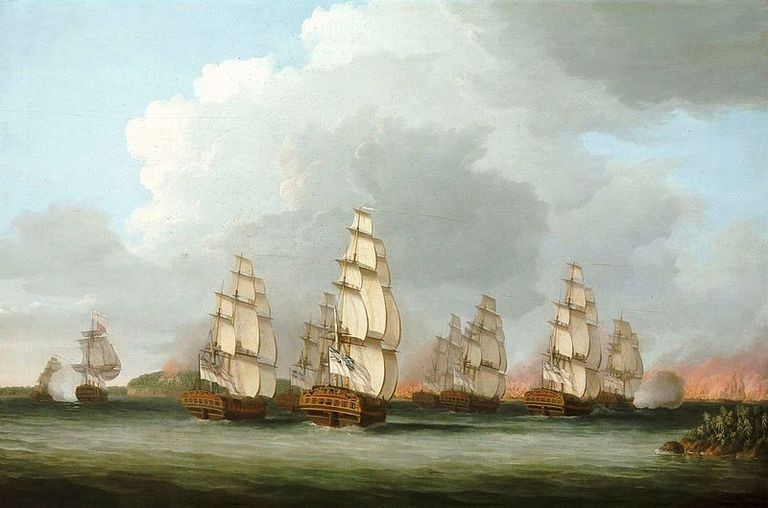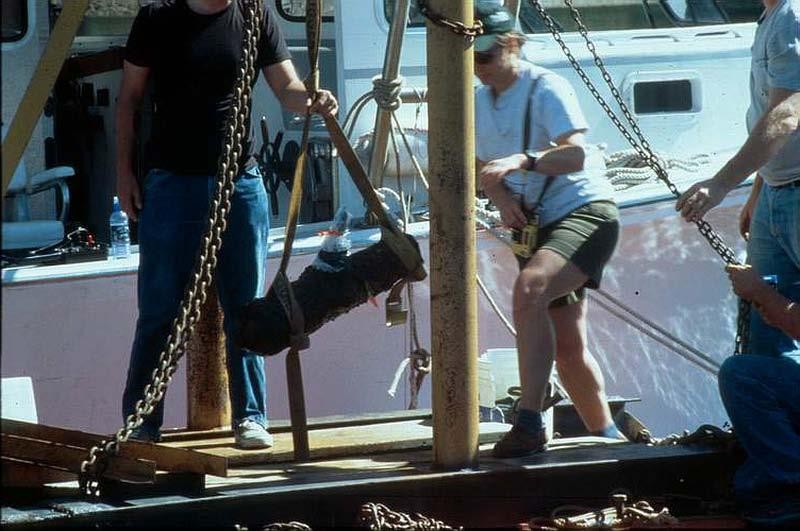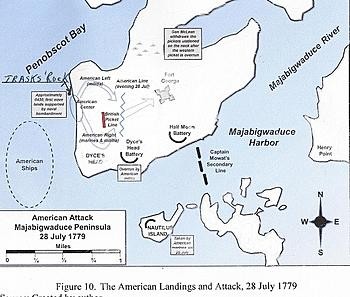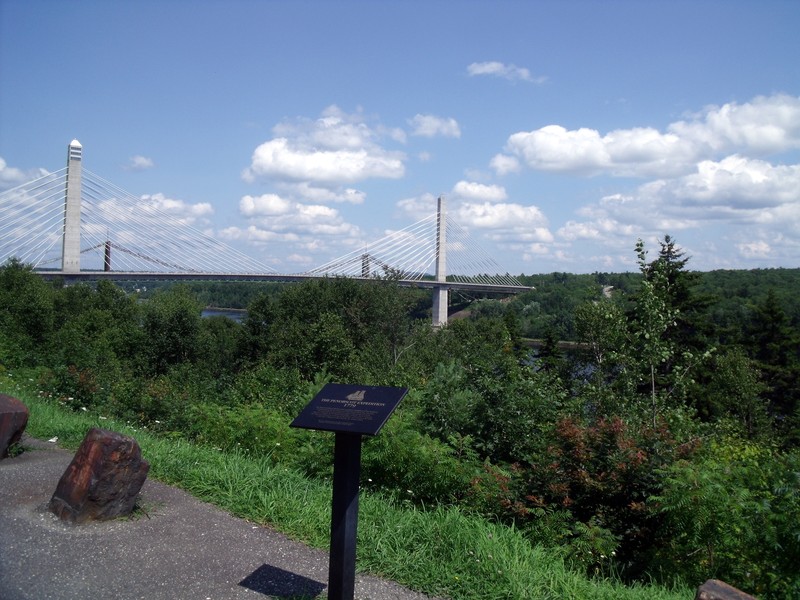Penobscot Expedition Historical Marker, 1779
Introduction
Text-to-speech Audio
This historical marker overlooks the Penobscot River and commemorates an important episode in the American Revolution. Discovering that the British had established a fort (Fort George) in Penobscot Bay, a small contingent of American rebels used whatever seaworthy vessels they could find and determined to challenge the British presence in the summer of 1779. Commodore Dudley Saltonstall was selected to lead the force made up of a frigate, a sloop, a brig, and numerous privately owned smaller sailing vessels. A landing force of 1000 men was assembled and led by Brigadier General Solomon Lovell, accompanied by Colonel Paul Revere. As would become commonplace throughout the war, the American rebels were unable to match the British Navy.
Images
Painting of the battle

Modern day salvage operations recovering artifacts from the battle

Map showing American landings and attack on August 28, 1779

This historical marker is located near the Penobscot Narrows Bridge.Photo by Bernard Fisher at hmdb.org

Backstory and Context
Text-to-speech Audio
Upon arriving in late July, 1779, the Americans had difficulty in landing because strategic spots along the bay were controlled by the British. After first landing a small force of Marines on Nautilus Island, a second landing was thwarted. For two days the American rebels attempted to land troops under very heavy fire. Due to British resistance, the Americans were unable to land the majority of their force.
With only 400 men at their command, and without sufficient artillery the American attempt to capture the battery failed. The firepower of the British defense proved to be too much and the Americans were forced to pull back.The British sent for reinforcements, and given their control of the area, those reinforcements arrived on August 12. On that fateful day, British Commodore Sir George Collier entered the bay and forced the Americans to turn and flee further into the bay. As a result, the Americans were trapped between the British fleet and fort.
Knowing the situation to be hopeless, the Americans burned their ships and fled inland. The British sustained comparatively few casualties: 25 dead, 35 wounded, 26 taken prisoner. The Americans, on the other hand, lost 474 plus all of their vessels. Commodore Saltonstall was court-martialed and removed from command while the British remained in possession of the area until the end of the war.
With only 400 men at their command, and without sufficient artillery the American attempt to capture the battery failed. The firepower of the British defense proved to be too much and the Americans were forced to pull back.The British sent for reinforcements, and given their control of the area, those reinforcements arrived on August 12. On that fateful day, British Commodore Sir George Collier entered the bay and forced the Americans to turn and flee further into the bay. As a result, the Americans were trapped between the British fleet and fort.
Knowing the situation to be hopeless, the Americans burned their ships and fled inland. The British sustained comparatively few casualties: 25 dead, 35 wounded, 26 taken prisoner. The Americans, on the other hand, lost 474 plus all of their vessels. Commodore Saltonstall was court-martialed and removed from command while the British remained in possession of the area until the end of the war.
Cite This Entry
Trowbridge, David J., Patrick Kelty, and Clio Admin. "Penobscot Expedition Historical Marker, 1779." Clio: Your Guide to History. May 29, 2017. Accessed August 13, 2025. https://theclio.com/entry/37016

